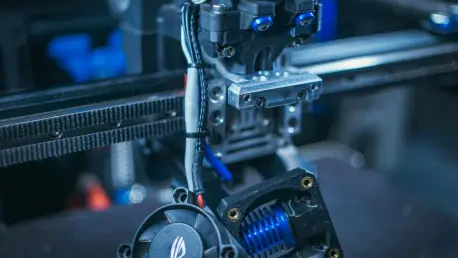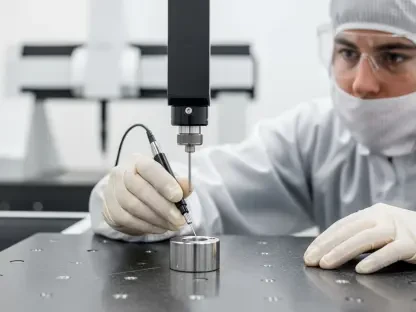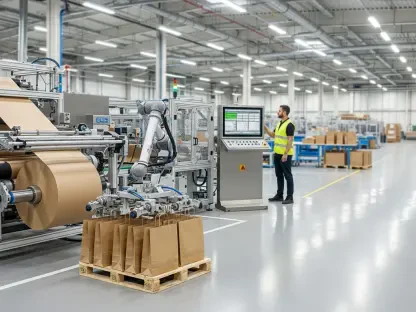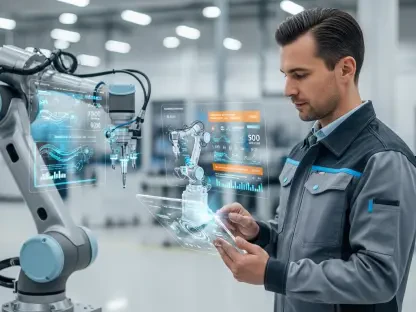What if a military unit in a remote combat zone could fabricate a critical vehicle part in mere hours instead of waiting weeks for a shipment, transforming the way defense logistics operate in high-pressure environments? This scenario is no longer a distant dream but a tangible reality, thanks to SPEE3D, a Melbourne-based innovator in additive manufacturing. Currently on a groundbreaking European tour, the company is demonstrating its Expeditionary Manufacturing Unit (EMU), a portable, containerized metal 3D printing system designed to revolutionize defense logistics. This journey across multiple countries offers a firsthand look at how rapid, on-site production can address urgent operational needs in high-pressure environments.
The significance of this tour cannot be overstated. With global supply chains under strain and geopolitical tensions escalating, defense forces face unprecedented challenges in maintaining equipment readiness. SPEE3D’s mobile technology promises to bridge this gap by enabling on-demand manufacturing directly in the field, slashing downtime and enhancing mission resilience. This initiative isn’t just about showcasing a new tool; it’s about redefining how militaries and manufacturers approach maintenance, repair, and overhaul (MRO) operations in an era of uncertainty.
Revolution on the Move: The Power of Portable 3D Printing
At the heart of SPEE3D’s mission lies a pressing need: the ability to produce mission-critical parts without reliance on distant factories or delayed logistics. The EMU, a fully transportable system housed in two 6-meter containers, brings industrial-grade metal printing to the most remote locations. Capable of crafting parts up to 0.9 meters by 0.7 meters and weighing as much as 40 kilograms, this unit is a game-changer for defense applications where speed and reliability are paramount.
This technology leverages cold spray processes, utilizing materials like Aluminum 6061 to create corrosion-resistant components in record time. Unlike traditional manufacturing, which can take weeks, the EMU delivers results in hours, addressing urgent demands in battlefield or outpost settings. Its deployment by forces in the US, UK, Japan, and Ukraine during exercises like RIMPAC highlights its proven effectiveness under harsh conditions.
The European tour, which began in Bourges, France, serves as a platform to demonstrate these capabilities to a wider audience. By engaging with local defense stakeholders and industry experts, SPEE3D aims to illustrate how mobile additive manufacturing (AM) can transform operational strategies, ensuring that vital equipment remains functional even in the most isolated regions.
Defense Manufacturing: A Critical Challenge Today
Global militaries grapple with a stark reality: disrupted supply chains and prolonged lead times for spare parts can jeopardize missions and endanger lives. Traditional production methods often fail to meet the immediacy required during crises, leaving forces vulnerable to equipment downtime. This issue is particularly acute in remote areas where access to conventional manufacturing hubs is limited or impossible.
SPEE3D’s initiative arrives at a pivotal moment, offering a solution that directly counters these logistical hurdles. By enabling on-site production, the technology minimizes dependency on external suppliers, ensuring that repairs for vehicles, aircraft, or other assets can be executed swiftly. Such agility is not merely convenient—it’s a strategic necessity for maintaining national security in an unpredictable world.
The impact extends beyond immediate fixes. Mobile AM fosters a shift toward localized, resilient supply networks, reducing risks associated with international shipping delays or geopolitical barriers. As defense organizations across Europe witness these benefits firsthand during the tour, the potential for widespread adoption becomes increasingly evident.
Inside the European Tour: Technology in Action
Kicking off in France through a partnership with digital manufacturing provider Vistory, SPEE3D’s European tour spans several nations, including Sweden, the Netherlands, and Poland, over the coming months. Each stop features live demonstrations and interactive workshops, allowing military personnel and industry leaders to explore the EMU’s capabilities up close. These events spotlight the unit’s dual-container setup, which includes the XSPEE3D printer and the SPEE3Dcell for post-processing tasks like heat treatment and quality testing.
The tour’s hands-on approach reveals how the system tackles real-world challenges, from printing durable components to ensuring operational readiness in austere environments. Feedback from past field trials, such as the US military’s AM Village, underscores its reliability, with reports of parts being produced in hours instead of days, saving critical time during training and combat scenarios. This practical evidence strengthens the case for integrating mobile AM into defense frameworks.
Collaboration with local partners enhances the tour’s relevance, tailoring discussions to specific regional needs. By fostering dialogue with European defense forces and manufacturers, SPEE3D ensures that the technology’s applications align with diverse operational contexts, paving the way for customized solutions that address unique logistical constraints.
Voices from the Field: Perspectives on Impact
Insights from key figures amplify the tour’s significance. Byron Kennedy, CEO of SPEE3D, emphasized the value of direct engagement, stating, “Bringing the EMU to European defense forces allows them to experience its speed and dependability for critical components right where they operate.” This perspective highlights the importance of proximity in showcasing technological advancements to potential adopters.
Alexandre Pédemonte, CEO of Vistory, added a broader view, pointing to the trend of sovereign manufacturing. “Integrating SPEE3D’s capabilities with our MainChain platform ensures secure, traceable production, aligning with the defense sector’s push for independent supply chains,” he noted. This partnership exemplifies how collaborative efforts can bolster transparency and security in military logistics.
Beyond executive commentary, field experiences offer compelling evidence of the EMU’s value. Stories from military trials reveal how on-demand printing has slashed repair times, enabling units to maintain operational tempo in demanding situations. These real-world outcomes resonate with tour attendees, illustrating the tangible benefits of adopting such innovative tools.
Strategies for Adoption: Harnessing Mobile AM in Defense
For defense entities and manufacturers eager to integrate mobile metal 3D printing, the tour provides a roadmap for implementation. A crucial first step involves identifying high-priority components—those most susceptible to supply delays or frequent failure, such as spare parts for tactical vehicles or aircraft. Targeting these areas ensures that the EMU’s rapid production capabilities deliver maximum impact.
Building partnerships with technology providers like SPEE3D is equally vital. Conducting on-site trials, as demonstrated during the tour, helps validate the system’s compatibility with specific mission demands. Additionally, incorporating traceability solutions, such as Vistory’s platform, safeguards production integrity, meeting stringent compliance and security standards essential for military applications.
Training remains a cornerstone of successful adoption. Workshops offered throughout the tour equip personnel with the skills needed to operate and maintain mobile AM systems in dynamic field conditions. By following these strategies, European defense forces can enhance readiness, minimize logistical bottlenecks, and adapt to evolving operational challenges with confidence.
Reflecting on a Groundbreaking Journey
Looking back, SPEE3D’s European tour marked a defining moment in the evolution of defense manufacturing, showcasing how mobile metal 3D printing could address urgent logistical needs with unmatched speed. The live demonstrations and partnerships forged during the journey illuminated the path toward more resilient, localized supply chains. As a next step, defense organizations were encouraged to prioritize pilot programs, testing the EMU in their unique environments to assess long-term integration potential. Furthermore, investing in personnel training and cross-industry collaboration emerged as essential for scaling this technology effectively. This tour not only highlighted innovation but also set the stage for a future where operational agility became a cornerstone of military preparedness.









